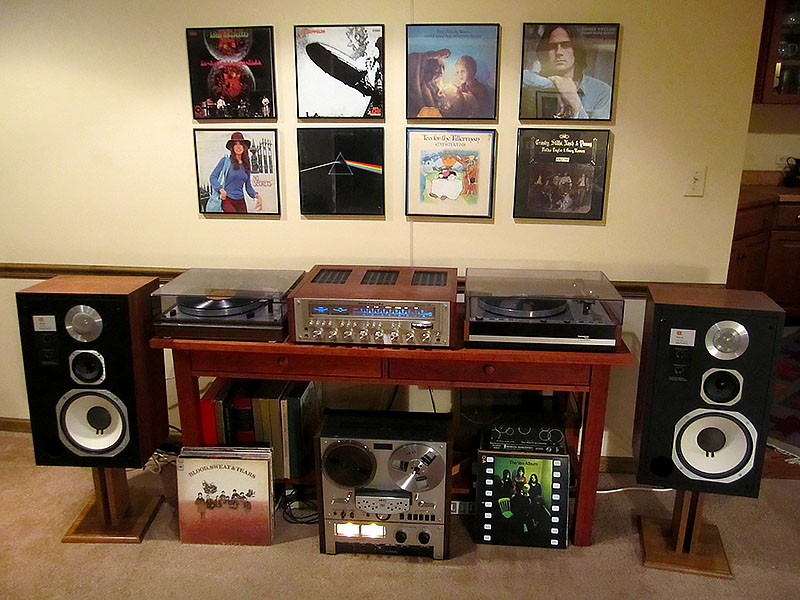Pi install
See Threaded callbacks in this page: https://sourceforge.net/p/raspberry-gpio-python/wiki/Inputs/
Basically you might be able to swap the while loop for something like this:
def onButtonPress(channel): if GPIO.input(channel) shell_command = "echo 0 > /sys/class/backlight/rpi_backlight/bl_power && shutdown -h now"; else shell_command = "echo 1 > /sys/class/backlight/rpi_backlight/bl_power"; subprocess.call(shell_command, shell=True, stdout=subprocess.PIPE, stderr=subprocess.PIPE) GPIO.add_event_detect(5, GPIO.BOTH, callback=onButtonPress)
That still isn't the greatest code, but it's (possibly) good enough, assuming it works; I don't know Python or understand what I've read of the GPIO stuff, so... *shrug* :)
I've played with Pis for audio stuff and bought a few DACs and even started making a breakout board for some switches, IR etc.
But had a few too many issues with volumio (I was going headless).
Eventually scraped the idea and went to Chromecast Audios where I want streamed audio.
Stuck them in the bathroom, kitchen, living room, bedroom.
Main use is in the kitchen and occasionally bathroom.
I'll have a go with PB suggestions tonight for the backlight on the screen.
I'm trying to make it as easy to use as possible, so the rest of the family only have to press a power button and then they've got control over the whole thing. To that end, I'll need a volume control as well, so I've been reading this about putting a potentiometer in as a volume knob. It's written for Volumio, but providing I can get the stuff they suggest into Libreelec it should be ok.
In my mind the screen'll be mounted flush (or as flush as can be) in the wall, all wiring hidden away but the power taken to a switched mains socket in a cupboard underneath the worktop. I'll have to find a way to make it easily removable, for upgrades and what not.
Somehow I've lost all sound. Instead of arseing about trying to put the config right, I'm going to wipe the SD card and start again and put what I know works in, make a backup (!) and then troubleshoot it.
Very useful to have at least a basic configured image to go back to if you do a wrong.
I use "dd" to clone the SD card location (something like /dev/mmblock0) to a network location.
Works on a running system which is nice. You can even run the command through gzip to compress the free space and shrink the storage required for the image. Slows the process down though. Requires a same or larger size SD to restore.

GPIO.setup(5, GPIO.IN, pull_up_down = GPIO.PUD_UP)
oldButtonState1 = True
while True:
#grab the current button state
buttonState1 = GPIO.input(5)
# check to see if button has been pushed
if buttonState1 != oldButtonState1 and buttonState1 == False:
subprocess.call("echo 1 > /sys/class/backlight/rpi_backlight/bl_power && shutdown -h now", shell=True,
stdout=subprocess.PIPE, stderr=subprocess.PIPE)
oldButtonState1 = buttonState1
time.sleep(.1)
On a click of the button it turns off the backlight and shuts the Pi down. I only need that one line as it automatically turns the backlight back on on a power up. However, although it was working initially on a rebuild, the sound's dropped off again. :C
My sound broke in Arch by doing something that buggered around with PulseAudio, which then fucked up ALSA, because PulseAudio is a buggy bloated piece of shit that nobody actually needs.
So maybe you installed/upgraded (possibly automatically) something that did fiddled with PA?
If you do really want to do it this way, since you only care about shutdown, you don't need to store/check oldButtonState and can simplify it to:
GPIO.setup(5, GPIO.IN, pull_up_down = GPIO.PUD_UP)
# endless loop until button is pressed
while GPIO.input(5):
time.sleep(.1)
# verify button state before switching off
if not GPIO.input(5):
subprocess.call("echo 1 > /sys/class/backlight/rpi_backlight/bl_power && shutdown -h now",
shell=True,stdout=subprocess.PIPE, stderr=subprocess.PIPE)
The if verification is probably not necessary (depending on how Python works), but even so it acts as both a safety against unwanted shutdown (incase something goes wrong), and clarifies the intent slightly. (The event-driven/callback method would make it even clearer.)